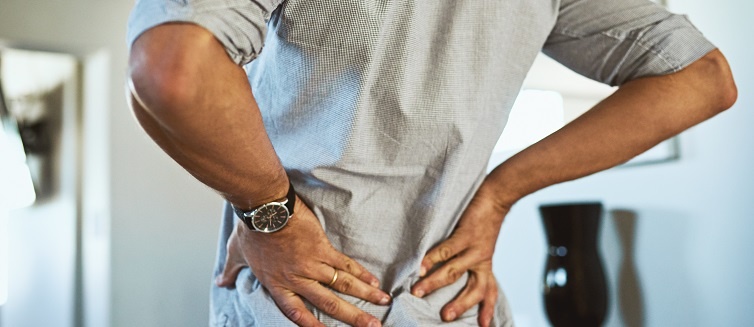Low back pain is a common complaint among adults of all ages. Left untreated, it can negatively impact every aspect of life. It’s a condition that UPMC rehabilitation staff see every day. And it’s a subject of particular interest to Gwendolyn Sowa, MD, PhD, director of the UPMC Rehabilitation Institute and chair of the Department of Physical Medicine and Rehabilitation.
We sat down with Dr. Sowa to learn about low back pain and how UPMC can help patients recover and return to active lives. This is what she had to say.
Never Miss a Beat!
Subscribe to Our HealthBeat Newsletter!
Thank you for subscribing!
You can now select the specific newsletters you'd like to receive.
You are already subscribed.
Subscribe to more newsletters in our email preference center.
Sorry, an error occurred. Please try again later.
Get Healthy Tips Sent to Your Phone!
Low Back Pain Q&A
Q: How do you evaluate low back pain?
A: When we evaluate a patient with low back pain, we’re primarily interested in how their back pain is affecting their ability to function. So, we listen carefully to what the patient is experiencing. We’re taking everything into account and already thinking how our treatment plan might help to improve their function.
Q: Is the source of back pain always the back?
A: Actually, not always, as pain presents differently for everyone. We do a careful physical exam of each patient to look at other contributors, such as nearby joints like the hip, that may be causing the problem or contributing to it in some way. The body is a complicated network of tissues and bone that often affect one another.
Q: How do you address patients who have had their entire life altered by pain?
A: As we develop a personalized plan to treat a patient with low back pain, we also educate and empower them with information so they can make the right choices that fit their lifestyle and individual goals. Our collaborative team is able to provide both emotional and physical support for patients as they recover. Treating the entire patient — from nutrition, to sleep, to social interaction, to physical comfort — is the key to success.
Q: What is the first thing you consider in treating a patient with low back pain?
A: The first and foremost thing that we want to do is to get the patient active again, exercising, and back to their functional activities. We work very closely with a physical therapist and use adjuncts to manage their pain so that we can do it safely and effectively. Things like massage therapy or acupuncture, and medicines or injections (when needed) are used together to get patients back to their activities.
Q: Is surgery always necessary to achieve a full recovery?
A: Surgery is an option, and we work closely with our surgical colleagues when necessary. Many times we can avoid surgery with the other options I mentioned. We try everything possible to help a patient before suggesting surgery.
Q: How do you revolutionize care and continue to grow?
A: At UPMC, we’re continually doing research and looking at how we can further individualize care for patients with low back pain. One area of interest is how we can use exercise to not only help the patient feel better and become stronger, but to actually help repair spine tissue. In addition, we’re looking at genetic and circulating blood biomarkers — such as inflammatory markers or markers of tissue breakdown — that can help us determine the right treatment course for the patient and see how they’re progressing with their treatment plan.
Q: Do colleagues with different areas of expertise collaborate for patient care?
A: UPMC takes a very collaborative and multidisciplinary approach to all patients, and this is the case for patients with low back pain. We look at all aspects of patient care and use them in combination to come up with the best treatment program — things like nutrition, pain management, and physical therapy. The practitioners are in very close communication to get the best possible outcome for each individual patient. Low back pain can change a person’s life. What we do best is work together to try to improve their quality of life.
To learn more about rehabilitation services at UPMC, please visit our website, or call 1-800-533-8762 to schedule an appointment.
Editor's Note: This article was originally published on , and was last reviewed on .
About Physical Medicine and Rehabilitation
At UPMC, we strive to improve your function after injury or illness. We help people recover from functional, pain-related, and neurological conditions, with both inpatient and outpatient care available. We are dedicated to providing you with exceptional clinical care and focused on developing new technologies and treatments to help you achieve mobility and maintain independence. Find a provider near you.

